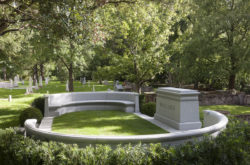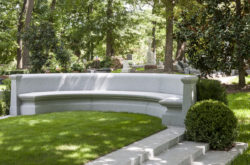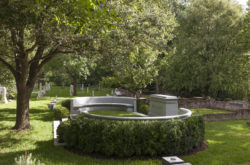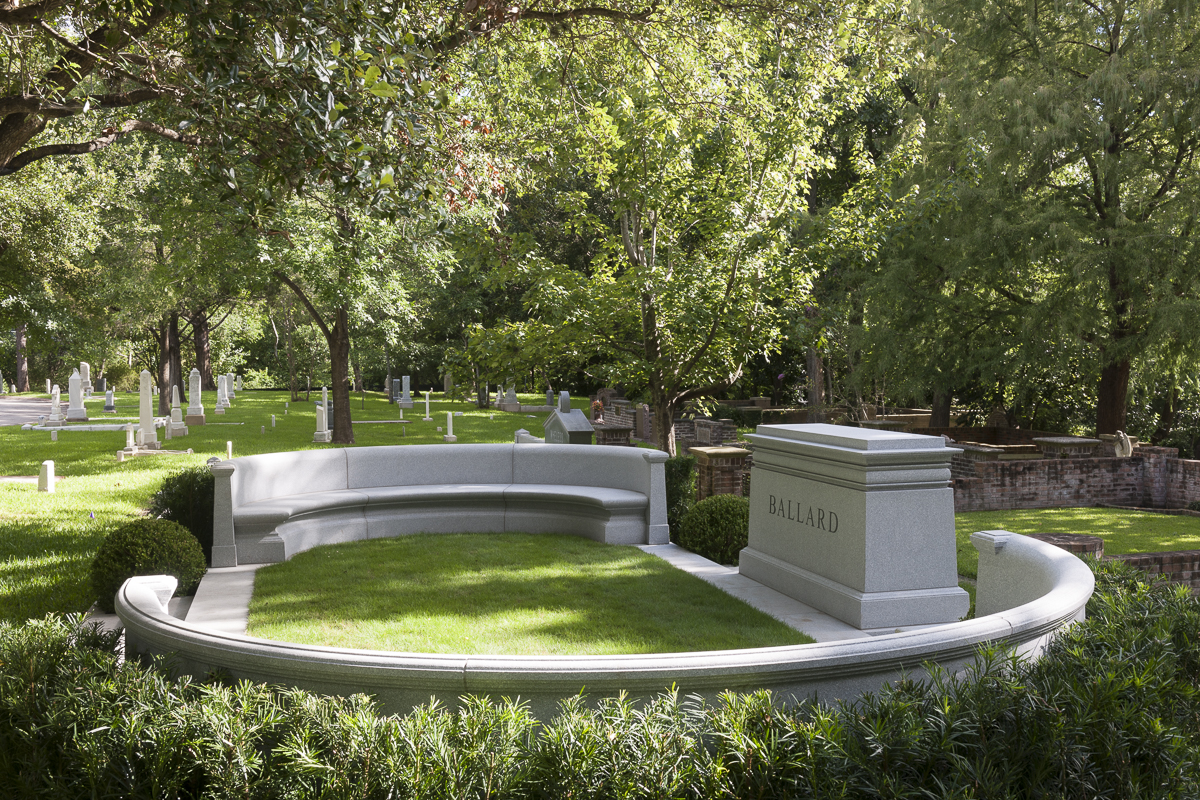
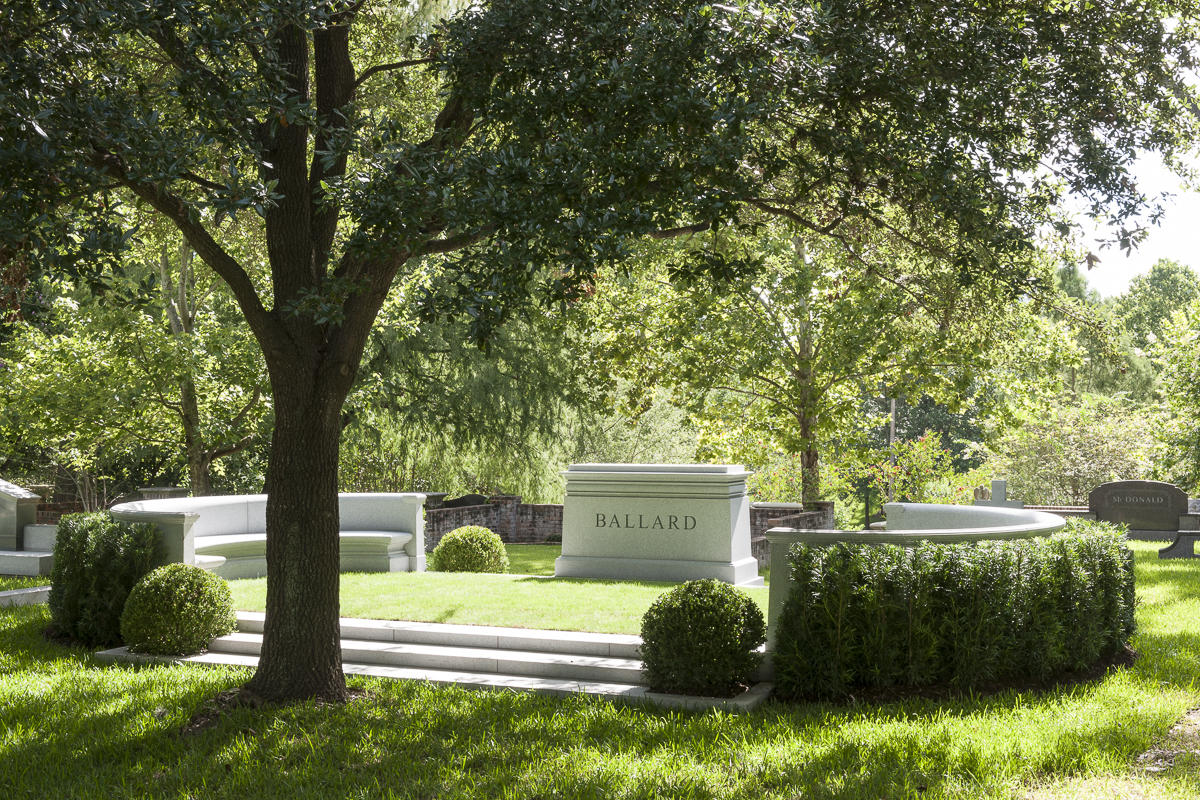
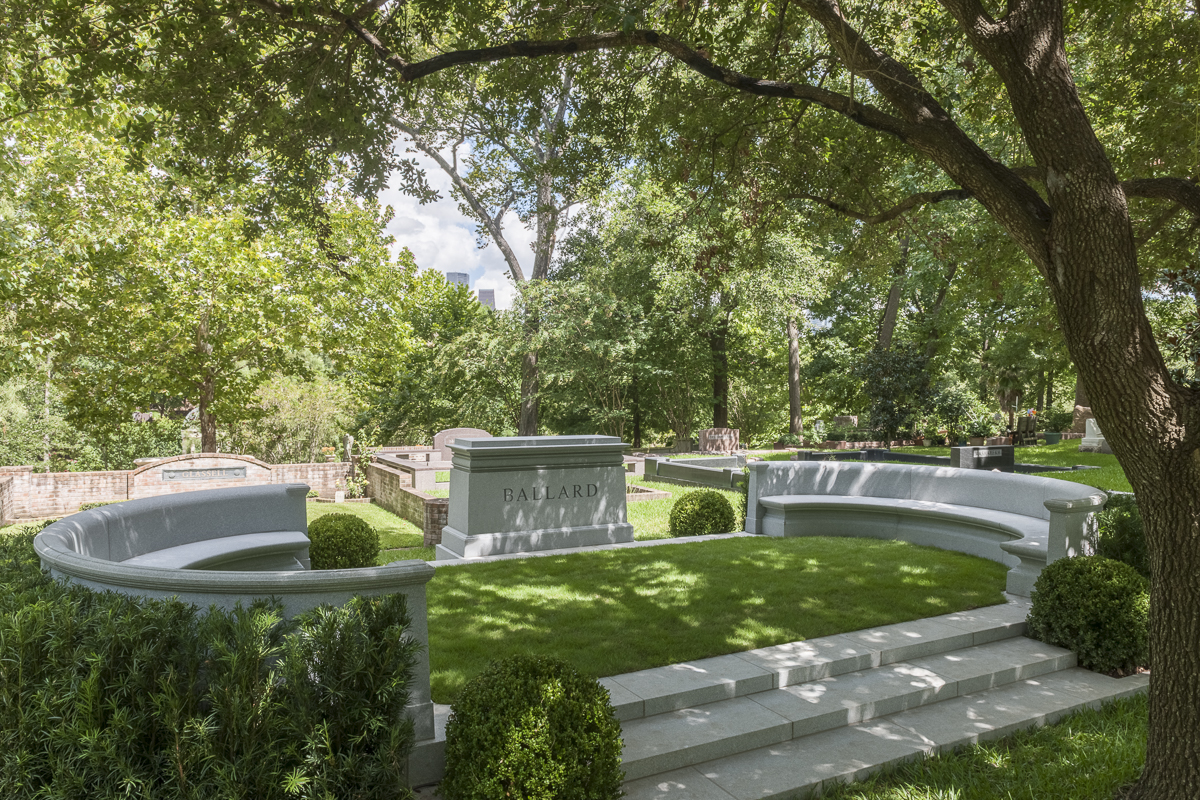
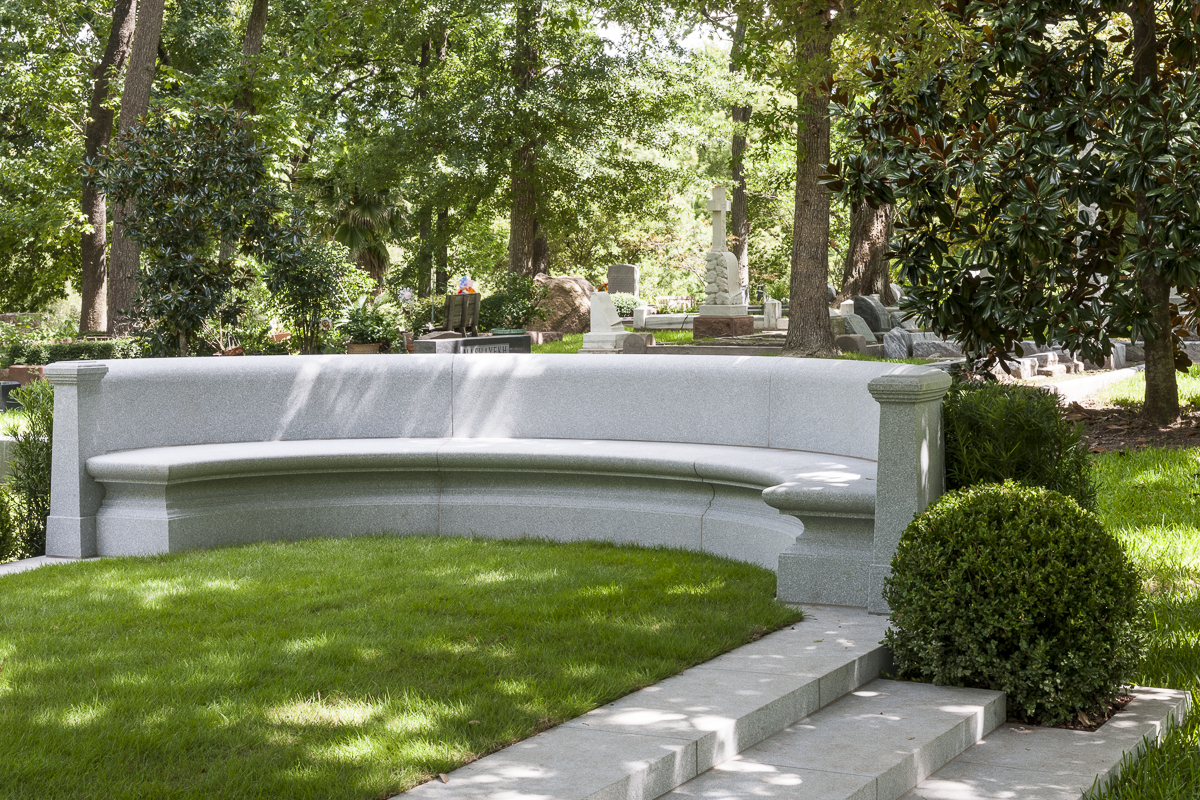
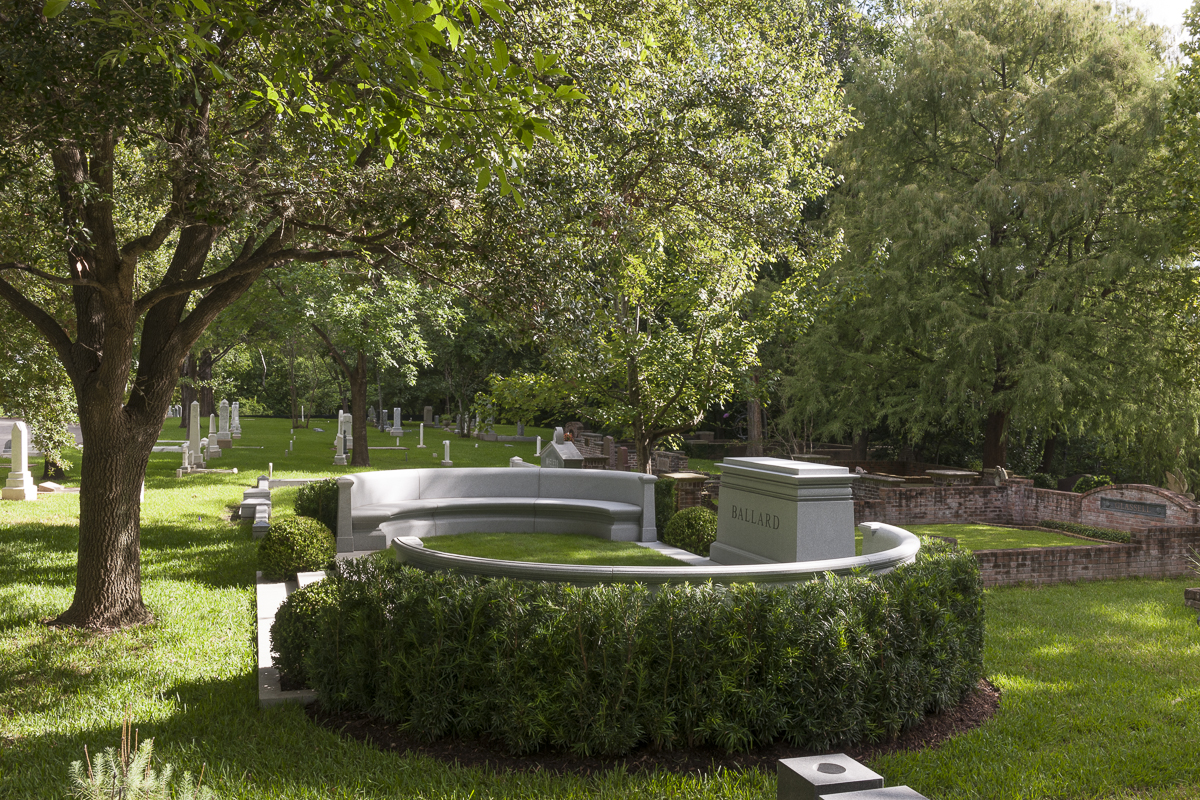
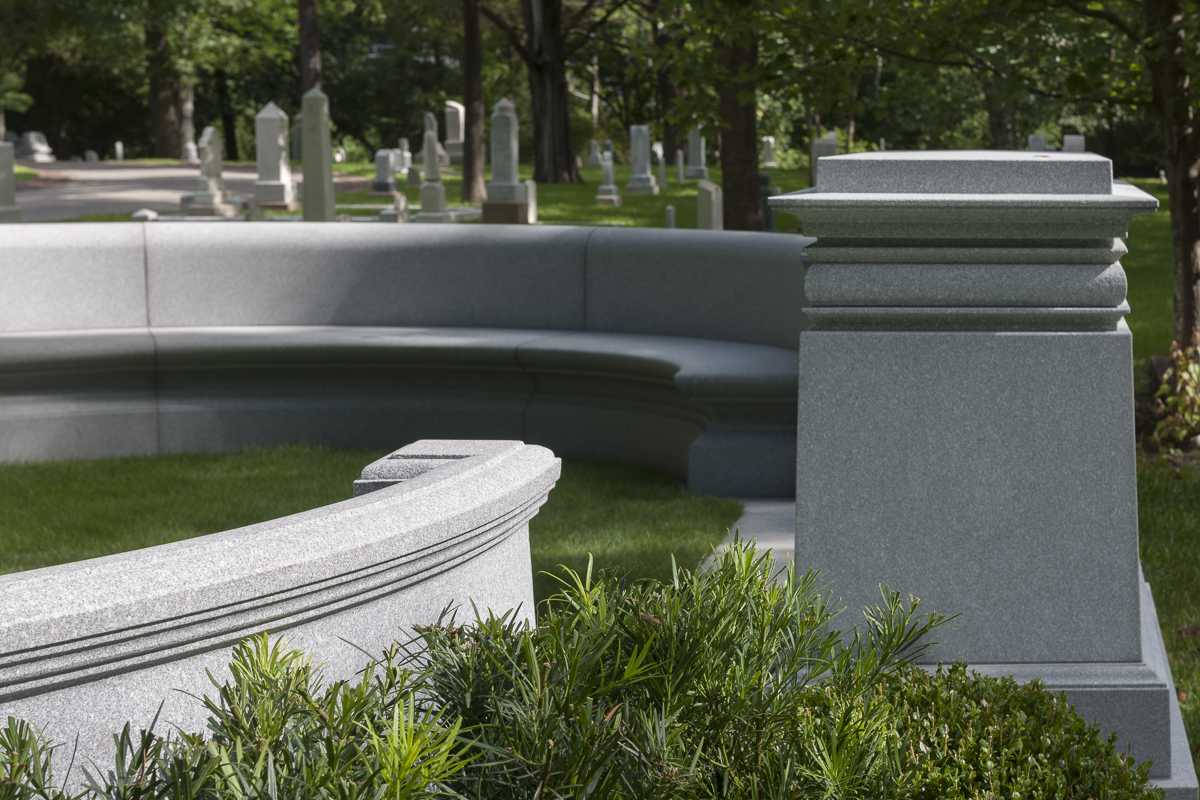
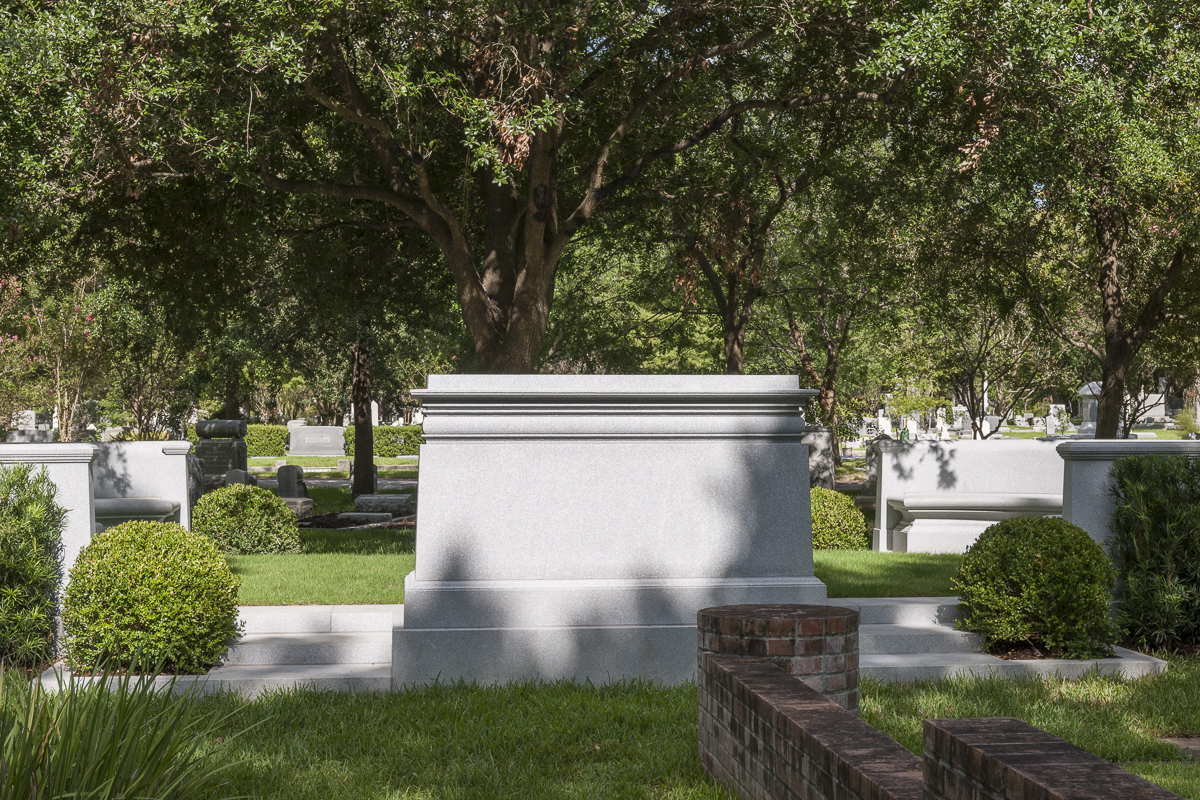
Located new downtown Houston, Texas, Glenwood Cemetary was established in 1871 as the state’s first picturesque cemetery. Its location along the meandering Buffalo Bayou renders it topographically varied and heavily wooded. The memorial site is a large rectangular plot, set amongst the more historical individual granite monuments of an early 19c portion of the cemetery’s development.
The memorial is characterized by low, broad steps ascending to a slightly raised grass plane flanked by elliptical seats. The carved central monument sits between the seats on axis with the physical approach to the memorial. Low perimeter hedges, punctuated by boxwood planting, surround the seats and temper the larger expression of the memorial as it relates to its smaller scale context. The simple curving seats are unified by the grass plane with the more hierarchical central monument which renders the interior as the primary focus of the experience. The open sides and horizontal character of the memorial keep it from competing with the oak tree and markers on adjacent plots.
The expressions of permanence and visual calmness are aided by the simplicity and massiveness of the granite slabs and enhanced by the memorial’s chaste sculptural design. The memorial was built of the fewest and largest granite pieces that could be carved and installed by men. The true massiveness of the slab material is reinforced visually be the gently tapered verticals of the stone carving throughout, which create a linear entasis, as well as the incised nature of the pulvinated frieze at the central monument. The carved central monument weighs 9.5 tons and consists of 3 pieces, while the seats weigh 18 tons and consist of 6 pieces each.
